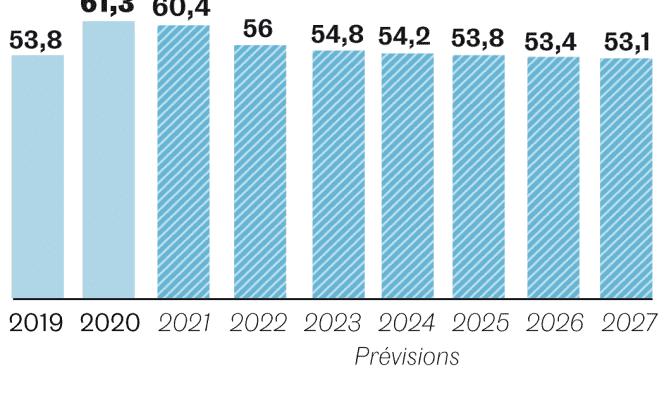Churchill promised ” blood and tears “. After more than a year of health crisis linked to Covid-19 and a historic recession, Bruno Le Maire, he prefers to talk about“Significant efforts” and of “Choice” to be done to control public spending and restore the country.
“We are giving ourselves five years to restore public finances after the crisis”, said the Minister of the Economy, Finance and Recovery, Thursday April 8, presenting the stability program, this fiscal year addressed to the European Commission through which France draws each year, in mid-April, its public finance trajectory.
A five-year term, therefore, to reconnect with the “serious” budget which the executive and the majority had made their mantra at the start of Emmanuel Macron’s term of office. What to give a very political coloring to this stability program, less than a year before the presidential election and while France must take, in the 1er January, the rotating presidency of the Council of the European Union. Bercy will thus send within a few days to Brussels – and from Thursday to the High Council of Public Finances, the body attached to the Court of Auditors, and responsible for giving an opinion on these calculations – forecasts going until … 2027.
New framing instruments
What to think of such a horizon, at a time when the French are entering their third confinement and when the government is concentrating its efforts on managing the health crisis? “It is an ambitious but credible objective”, do we want to believe in Bercy. While specifying that the stability program is understood “From a situation where the health crisis is behind us in the summer of 2021”. Without therefore considering the dark scenario of a new variant insensitive to vaccines.
In detail, while the public deficit plunged in 2020, to 9.2% of gross domestic product (GDP), and should reach 9% this year due to the reconfinement, the stated objective of the stability program is return below 3% in 2027. This is the level of deficit that would stabilize the debt in 2025 and lower it from 2026, argues the Ministry of the Economy.
To do this, it will be necessary to reduce public spending at a sustained pace. The latter would only increase by 0.7% per year on average in volume (excluding support and stimulus measures) until 2027, i.e. the strongest control in the last twenty years. The braking would be just as significant compared to the rate of progress at the start of the five-year term, excluding the crisis linked to Covid-19 (+ 1% per year).
You have 57.53% of this article to read. The rest is for subscribers only.
